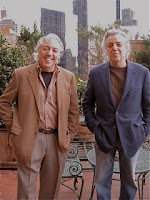Christopher Hitchens was a remarkable and fearless man who
remained true to himself and his beliefs right up until the moment that
esophageal cancer claimed his life in December 2011. Admittedly, Hitchens was a man of excesses,
and his lifestyle largely contributed to his death at the relatively young age
of sixty-two. But it is unlikely that he
gave much thought to the destructiveness of such a lifestyle until the 2010
book tour during which he was suddenly hospitalized because of the agonizing
pain he experienced around his chest and thorax. Eighteen months later, Hitchens would be dead,
but he spent much of his remaining time writing about his personal journey
through what he called “Tumorville.” That
work is captured in Mortality, the
little 104-page memoir on dying he left behind.
Christopher Hitchens was, of course, not a man without
enemies – thousands of them – and, early in his struggle to rid himself of the
tumor that killed him, he became aware that “some who have long wished me ill”
were rooting for the “blind, emotionless alien” of a tumor that was killing
him. If he had not been so outspoken
about his atheism and disillusionment with liberal politics, it is likely that
far fewer would have openly gloated about his illness. But if the effectiveness of a man’s arguments
can be measured by the number of his enemies, Christopher Hitchens was an
extremely effective debater. The man
knew he had enemies – and he loved it.
I do suspect that admirers of Christopher Hitchens will have
already read some of what is in Mortality
because portions of the book were published previously as Vanity Fair magazine essays.
Although this might disappoint some readers, keep in mind that the
observations Hitchens makes about living with cancer, enduring months of
chemotherapy, and the specific “etiquette” of the disease are so frankly
presented that they remain as powerful on subsequent readings as they are on
the first. Note also, that capturing the
essays in one volume this way makes it easier to keep them together for re-reading.
 |
| Christopher Hitchens |
Hitchens was well aware that many people were wondering
whether he would turn to religion before his death. He even stumbled upon a “Place Bets” video
inviting people to bet on whether he would “repudiate (his) atheism and embrace
religion by a certain date or continue to affirm unbelief and take the hellish
consequences.” While he generally found
this kind of thing to be more amusing than annoying, Hitchens offers a rather
poignant thought about all those prayers supposedly being said on his behalf:
“Suppose I ditch the principles I have held
for a lifetime, in the hope of gaining favor at the last minute? I hope and trust that no serious person would
be at all impressed by such a hucksterish choice. Meanwhile, the god who would reward cowardice
and dishonesty and punish irreconcilable doubt is among the many gods in which
(whom?) I do not believe. I don’t mean
to be churlish about any kind intentions, but when September 20 comes (the
official “Everybody Pray for Hitchens” day), please do not trouble deaf heaven with your bootless cries. Unless, of course, it makes you feel better.”
Pure Hitchens…all the way to the end.












